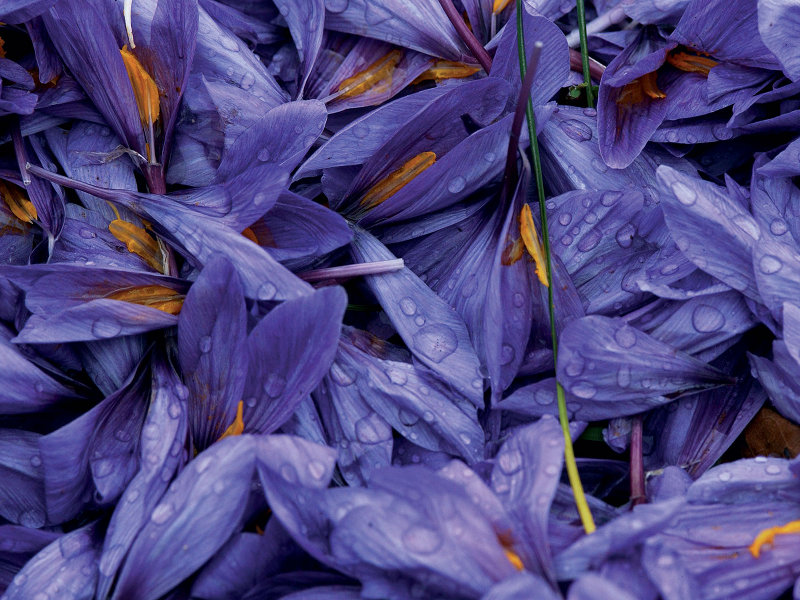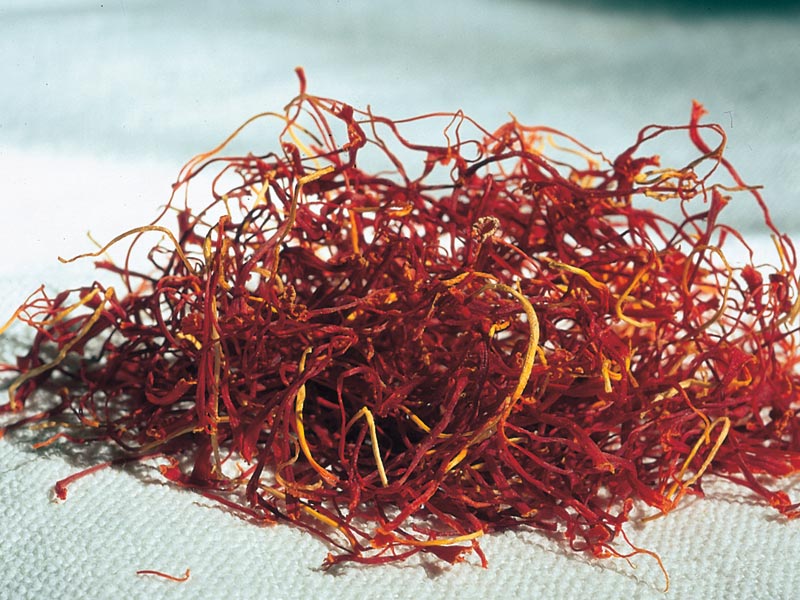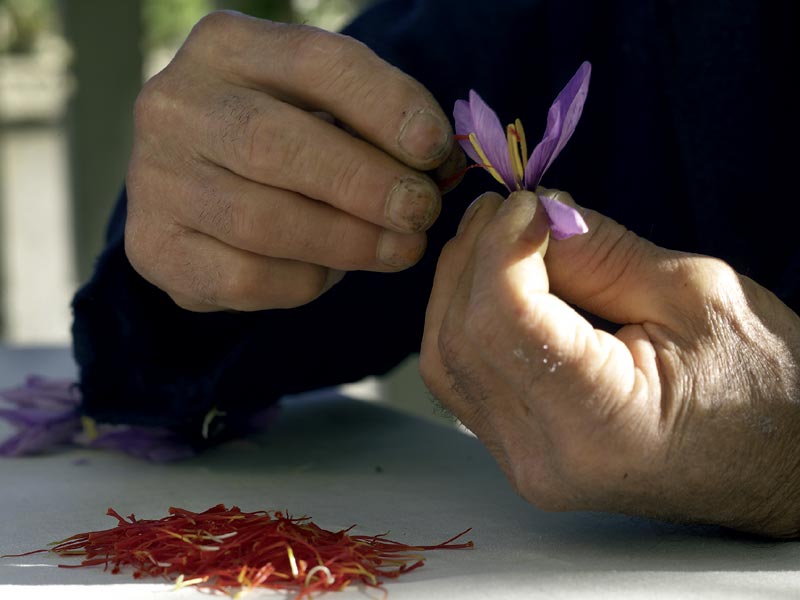Home » Agriculture, Zootechnics » The Park's Products » The Products
Saffron
History
From Asia, the cultivation extended to various parts of the world, also reaching Europe and Italy thanks to a Dominican monk belonging to Santucci family from Navelli. The red gold of Abruzzi, L'Aquila saffron has been commercialized over the centuries, contributing to the success of the Abruzzi cuisine. For the inland areas, saffron has always represented one of the traditional sources of employment and income like the agricultural and breeding activities, sheep breeding and wool sale among the others.
Current Production Area in the Park: The production area includes many Municipalities on the Gran Sasso slope of L'Aquila. Within the area, the cultivation is practiced between the 350 and 1,000m a.s.l.
Description
At the end of the vegetative cycle starting with the sowing of the bulbs in the soil, the flowers are harvested early in the morning, before they open. The stigmas are taken away in the workshop. They are subsequently put on a sieve and on wooden embers (generally almond or oak wood): this stage is called toasting and represents one of the crucial processing moments to obtain an extremely scented product with the right final humidity, a guarantee for the maintenance of the features.
About 200,000 flowers are necessary to produce one kilo of dried saffron. Saffron can be sold in intact threads or in powder, in paper bags or glass jars.
Product Availability: Harvesting and the subsequent processing of saffron is usually carried out in October. The product is for sale all year round.














